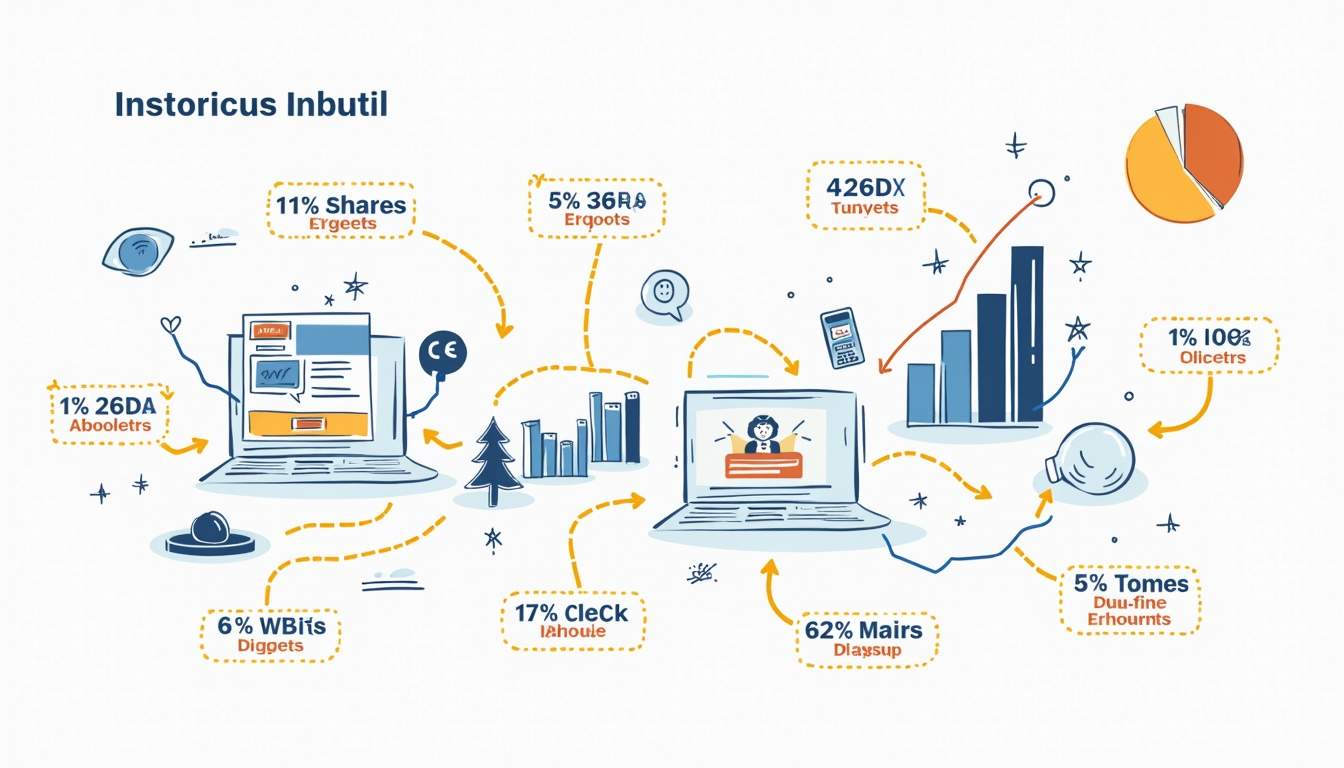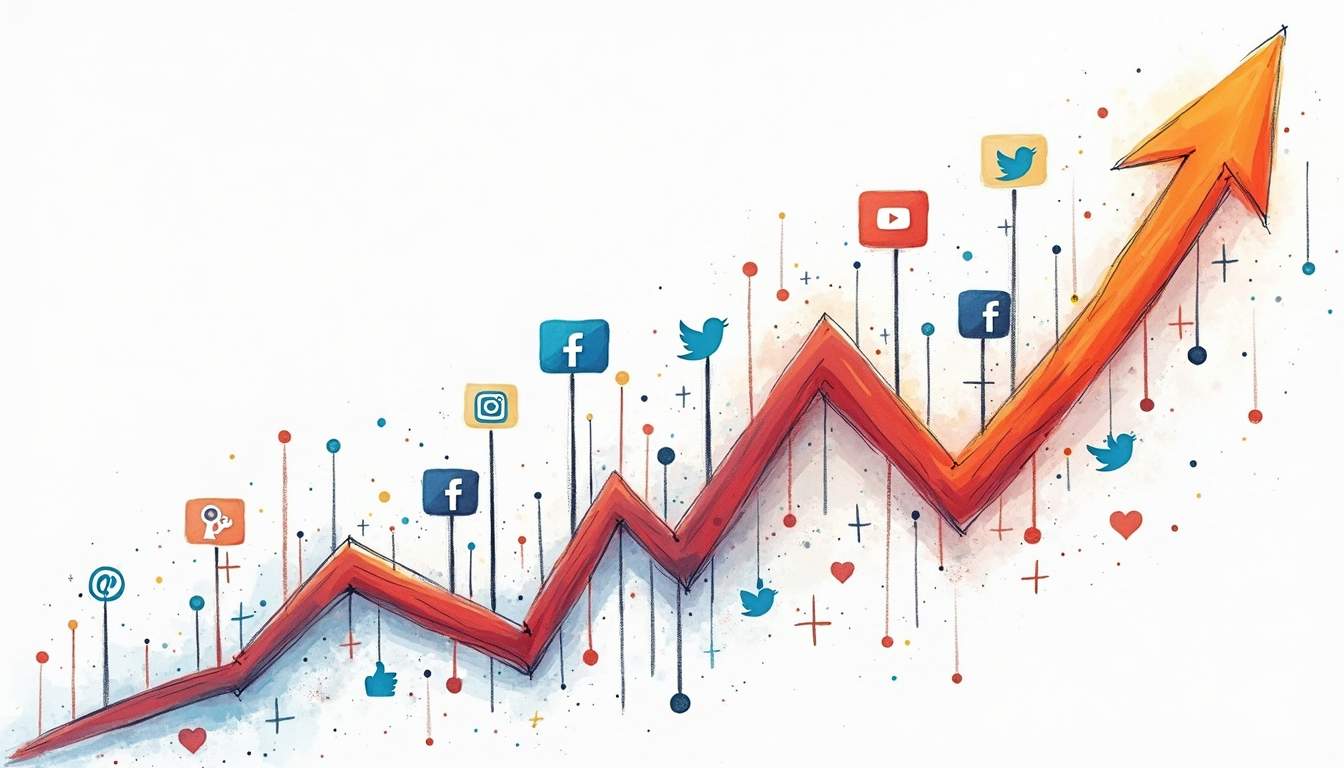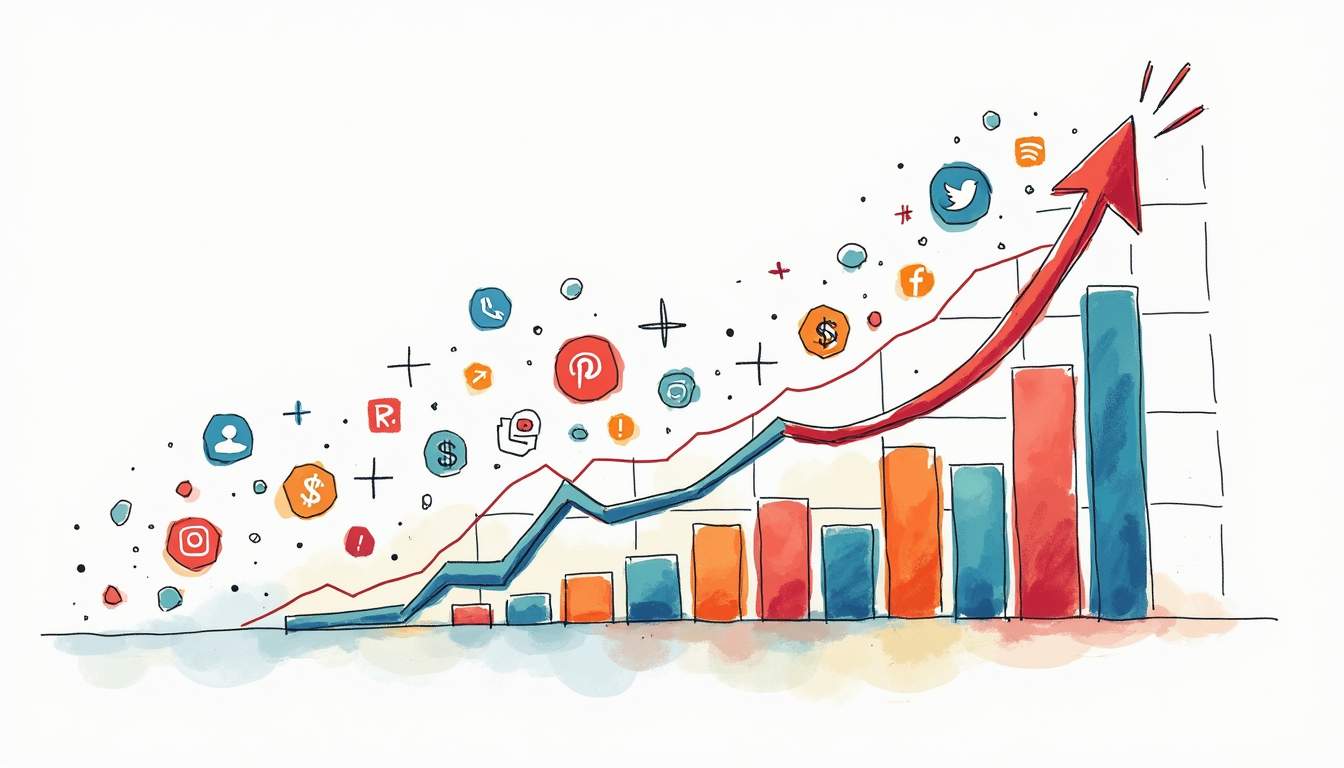In the digital age, social media has become a pivotal platform for businesses looking to increase their reach and ultimately drive sales. Analyzing social media engagement effectively can provide valuable insights into how your audience interacts with your brand, helping to refine strategies for success. Understanding the nuances of various social media platforms and how to interpret the data is essential for optimizing engagement and sales.
This guide will take you through the key components of analyzing social media engagement, the tools available for assessment, interpreting the data, and aligning the insights with your sales goals. By the end, you will have a comprehensive understanding of how to leverage engagement metrics for increased sales.
Understanding Social Media Engagement Metrics
Social media engagement metrics are indicators of how well your audience interacts with the content you post. These interactions can range from likes and comments to shares and click-throughs. Each metric provides insights into different aspects of engagement and can help tailor your strategy to better meet audience preferences. By analyzing these metrics, brands can not only gauge the effectiveness of their messaging but also refine their approach to resonate more deeply with their target demographics.
Key Performance Indicators to Track
Key Performance Indicators (KPIs) are crucial in measuring social media success. Common KPIs include likes, shares, comments, and follower growth. Each of these metrics offers insight into various stages of customer interaction. For instance, likes may indicate brand awareness, while shares can be indicative of how compelling your content is to your audience. Additionally, comments can provide qualitative feedback, allowing brands to understand the sentiments and opinions of their followers, which can be invaluable for future content creation.
Beyond these basics, it’s important to track conversion rates, click-through rates, and engagement rates. These indicators show how your social media efforts translate into actual results, such as website visits or sales increases. By keeping a close eye on these KPIs, you can determine which campaigns are successful and which may need adjustment. Furthermore, analyzing the timing and frequency of posts can reveal optimal engagement windows, enabling brands to schedule content for maximum impact. This data-driven approach not only enhances engagement but also builds a more loyal audience base.
Differences Between Platforms
Understanding that each social media platform has its unique engagement metrics is vital. Facebook, for instance, is known for fostering community through comments and shares, while Instagram’s visual nature prioritizes likes and story interactions. LinkedIn, on the other hand, is more about professional engagement measured through profile views and post shares. Each platform’s user behavior and preferences dictate how content should be crafted and distributed, making it essential for brands to adapt their strategies accordingly.
Recognizing these differences helps in customizing your content accordingly. YouTube, for example, places a strong emphasis on watch time and subscriber growth, which means that creating engaging video content is paramount. Twitter, in contrast, is about engagement frequency and retweets, where timely and relevant posts can spark conversations and trends. Additionally, TikTok has emerged as a powerful platform where creativity and authenticity reign supreme, requiring brands to embrace a more informal and entertaining style of communication. Tailoring your approach to each platform ensures that your content harnesses the strengths of each, ultimately leading to more effective engagement and brand loyalty across diverse audiences.
Tools and Techniques for Analyzing Engagement
There are numerous tools available to assist in social media analysis, each offering different capabilities. These tools can help track real-time engagement, historical data, and even predictive analytics. Selecting the right tools depends largely on your specific goals and the platforms you are focusing on. Understanding the nuances of each tool can significantly enhance your analysis, allowing you to tailor your strategy to better meet your audience’s needs.
Social Media Analytics Tools Overview
Popular analytics tools include Google Analytics, Hootsuite, and Sprout Social. Google Analytics is excellent for tracking traffic from social media to your website, providing insights into how social media actions translate into site engagements. Hootsuite offers a comprehensive view of all your social media channels from a single dashboard, perfect for time-saving and efficiency. This centralized approach not only streamlines your workflow but also enables you to respond to audience interactions in real-time, fostering a more engaged community.
Additionally, tools like Sprout Social specialize in audience demographic insights and content performance analysis. They provide valuable metrics such as engagement rates, share counts, and audience growth, which can inform your content strategy. Each tool comes with its set of advantages and can be utilized independently or in conjunction with others for a more rounded perspective. For instance, using Google Analytics alongside Hootsuite can give you a clearer picture of how social media campaigns are driving traffic and conversions, allowing for more informed decision-making.
Manual vs. Automated Analysis
Manual analysis allows for a deep dive into specific posts and organic assessment of freeform text, such as comments, offering nuanced understanding. This method can be labor-intensive but often yields detailed insights into specific customer sentiments and engagement patterns. By examining individual interactions, you can uncover underlying themes and emotions that automated tools might overlook, providing a richer context for your audience’s behavior.
On the other hand, automated analysis uses algorithms to quickly process large volumes of data, identifying broader trends and patterns. These tools can aggregate data across multiple platforms, offering a macro view of engagement that can be invaluable for strategic planning. Both approaches have their merits, and a combination of the two can often provide the most effective results. Automated tools can quickly identify engagement spikes, while manual analysis can pinpoint the reasons behind these spikes. For example, if an automated tool flags a sudden increase in shares for a particular post, a manual review of the comments may reveal that a trending topic or influencer mention sparked the interest, guiding future content development.
Interpreting Engagement Data
After collecting engagement data, interpreting it correctly is crucial for forming actionable strategies. The data not only highlights current performance levels but also offers foresight into future audience behaviors and preferences. Understanding this can significantly impact your overall marketing effectiveness.

Identifying Trends and Patterns
Identifying trends involves looking at patterns in engagement over time. Recognizing which types of content perform best on specific days, or during certain times, can optimize your posting schedule. Seasonal trends also provide perspective on how external factors might influence your audience’s behavior.
This analysis should consider historical data to gauge performance trends. By identifying what consistently engages your audience, you can selectively improve content strategies to maximize interaction and engagement sustainability.
Measuring Audience Sentiment
Audience sentiment analysis is assessing the tone of engagements toward your content. Sentiment analysis tools can gauge whether the comments and engagements are positive, neutral, or negative, giving you insight into public perception. Adjusting strategies to increase positive sentiment can positively impact sales.
Furthermore, understanding what resonates emotionally with your audience can help you craft more compelling content. Addressing negative feedback also provides an opportunity to improve and show your audience that their concerns are being acknowledged and acted upon.
Strategies to Boost Engagement for Sales
Effective strategies not only increase engagement but also convert that engagement into sales. Crafting content that speaks directly to your audience’s needs and desires is a vital aspect of this process.

Creating Compelling Content
Quality content is at the core of boosting engagement. Content that educates, entertains, or inspires has a higher likelihood of being interacted with. Use storytelling to form a connection with your audience, engaging them on a deeper level.
In addition to storytelling, incorporating visual elements like infographics, videos, and high-quality images can capture and maintain the audience’s attention. Moreover, interactive content such as polls and quizzes can enhance engagement by actively involving the audience in your brand’s narrative.
Timing and Frequency of Posts
The timing and frequency of your posts can significantly impact your engagement rates. Posts published when your audience is most active will naturally gain more traction. Utilizing analytics to determine peak engagement times will help in scheduling posts more effectively.
Frequency is equally important. Posting too often can overwhelm your audience, while infrequent posts might leave them disengaged. Striking the right balance cultivates anticipation and ensures your audience remains engaged without feeling oversaturated.
Aligning Engagement with Sales Goals
Ultimately, the goal of increasing social media engagement is to drive sales. Aligning your social media efforts with your sales objectives ensures a clear path from engagement to conversion, maximizing the return on your social media investments.

Setting Clear Objectives
Defining clear, measurable objectives aligns social media strategies with sales targets. These objectives should be specific, measurable, achievable, relevant, and time-bound (SMART). By setting tangible goals, your engagement efforts can be directed towards achieving specific outcomes, such as lead generation or increasing conversion rates.
Regularly reviewing and adjusting these objectives ensures that your strategies remain aligned with market changes and business priorities. This responsiveness allows your business to adapt and thrive in a dynamic digital landscape.
Integrating Social Media with Sales Funnels
Integrating social media data with your sales funnel can provide a comprehensive view of the customer journey. Social media should complement each stage of the sales funnel, offering content that nurtures leads through awareness, consideration, and decision phases.
Collaboration between marketing and sales teams can enhance this integration, ensuring that the content not only engages but also educates and persuades the audience to transition smoothly from being prospects to satisfied customers. Analyzing which types of social media content convert at the highest rates can lead to more strategic content development, improving sales outcomes.
Take Your Hotel’s Social Media Engagement to New Heights
Ready to transform your hotel’s social media engagement into tangible revenue growth? At Prosper Hotels, we specialize in elevating your online presence and turning clicks into bookings. With our expert revenue management, innovative digital marketing, and streamlined group housing services, we’re here to ensure your hotel’s success and your team’s satisfaction. Don’t miss the opportunity to enhance your hotel’s performance. Learn More about how we can help you achieve your goals.


 Drive More Hotel Revenue
Through Untapped Strategies
Drive More Hotel Revenue
Through Untapped Strategies
